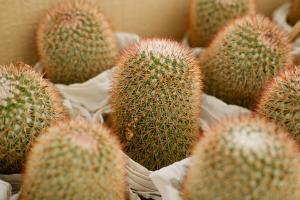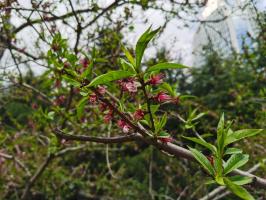When to Plant Potted Plants from Inside to Outside
Bringing potted plants outside when the weather is warm and sunny is a great way to enhance your outdoor space. However, it’s important to know when is the best time to make the transition so that your plants can thrive. Here are a few things to consider when deciding when to plant potted plants from inside to outside.
1. Knowing Your Plant’s Tolerance for Cold Temperatures
The first thing to consider is your plant’s tolerance for cold temperatures. Some plants, such as succulents and cacti, can withstand colder temperatures while others, like tropical plants, prefer warmer weather.
If you have a plant that is sensitive to cold temperatures, it’s best to wait until the temperature is consistently above 50°F (10°C) before moving it outside. If the temperature drops below this threshold, consider bringing the plant back inside or covering it with a protective blanket to prevent damage.
2. Choosing the Right Time of Day
When transitioning your potted plants from inside to outside, it’s best to choose the right time of day. Moving them during the hottest part of the day can cause stress and damage to the plant. Instead, choose early morning or evening when the temperature is cooler and the sun isn’t as strong.
3. Hardening Off Your Plants
Hardening off your potted plants is an important step before moving them outside. This means gradually exposing them to the outdoor environment over a period of 7-10 days. Start by placing them in a shaded area for a few hours a day and gradually increase the amount of sunlight they receive. This will help your plants adjust to the change in light intensity and temperature, preventing shock and allowing them to thrive.
4. Checking the Soil Moisture
Before moving your potted plants outside, it’s important to check the soil moisture. If the soil is too dry, your plants may experience stress and damage. Water your plants thoroughly a day or two before moving them outside to ensure that the soil is moist but not waterlogged.
5. Waiting for the Right Season
Finally, it’s important to consider the season when deciding when to plant potted plants from inside to outside. In most regions, it’s best to wait until after the last frost date before moving your plants outside. This ensures that the weather is consistently warm and there is less risk of damage to your plants.
In conclusion, knowing when to plant potted plants from inside to outside can help your plants thrive and enhance your outdoor space. Remember to consider your plant’s tolerance for cold temperatures, choose the right time of day, harden off your plants, check the soil moisture, and wait for the right season before making the transition.

 how many times do yo...
how many times do yo... how many planted tre...
how many planted tre... how many pine trees ...
how many pine trees ... how many pecan trees...
how many pecan trees... how many plants comp...
how many plants comp... how many plants can ...
how many plants can ... how many plants and ...
how many plants and ... how many pepper plan...
how many pepper plan...






























